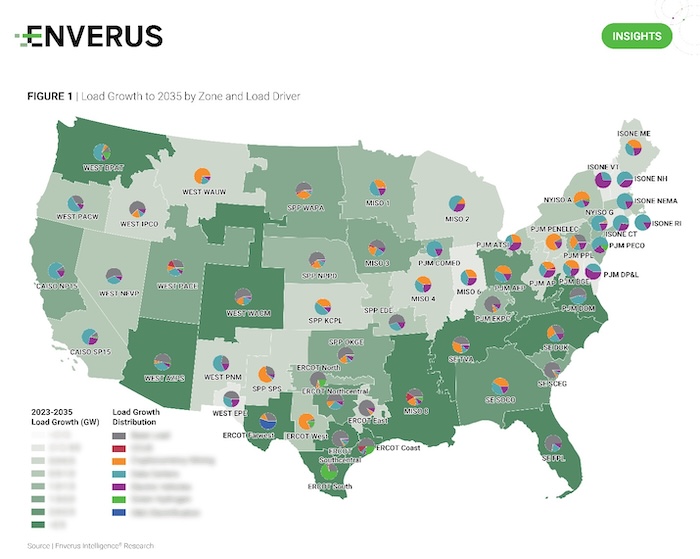Long-Term Load Forecast | Re-Energized Rate of Growth
Enverus Intelligence Research’s (EIR) long-term load forecast model considers historical drivers of power demand across the Lower 48. It forecasts the total load in the U.S. to grow 42% by 2050 from today due to population growth, increased data center demand, cryptocurrency mining growth, carbon capture and storage (CCUS), green hydrogen plant demand and electric vehicle (EV) adoption (Figure 1). SE, PJM, ERCOT and WEST are projected to experience the highest levels of load growth extending to 2050. Offsetting load growth in this figure is EIR’s behind the meter residential solar and storage forecast.

Data center load growth will add 153 GW of capacity by 2050. EIR believes that data center load estimates across the U.S. are overstated: load outlooks from ISOs often incorporate biases either to encourage new policy or add a margin of safety. Their model contains more realistic projections for each significant load segment using an unbiased and consistent methodology across the Lower 48.
Additionally, ERCOT base load stands out, reflecting Texas’ strong population growth and industrial base. Nevertheless, PJM and SE regions will continue to be the highest base load areas with the highest intraday variability. Exposure to large industrial load growth, such as data centers in areas such as the Dominion Zone in PJM (PJM DOM) and the North Central zone in ERCOT (ERCOT Northcentral), is the main factor driving higher load growth. EVs also have a strong impact in CAISO and the Northeastern states in ISONE, PJM and NYISO.
Enverus | www.enverus.com








